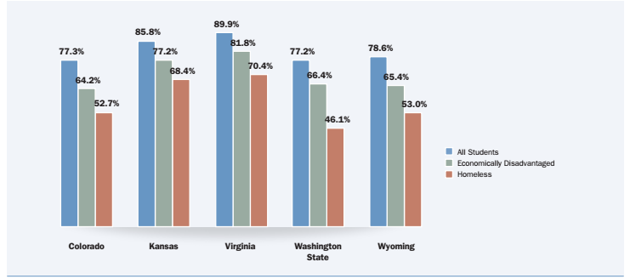The Complicated Task of Identifying Homeless Students
Few states know where those children are, making it difficult to connect them with resources.
Increasing Rates of Student Homelessness, 2006-07 to 2013-14

As alarming as those numbers are, the fact that figures on homeless students exist at all is a step in the right direction. That’s because, until recently, only five states have voluntarily collected that data: Colorado, Kansas, Virginia, Washington, and Wyoming. In those states, graduation rates for this population lagged behind the rest of the students, even those who are low-income. Now, provisions in the newly passed Every Student Succeeds Act (ESSA), the nation’s federal education law, are strengthening the visibility of homeless students and other disadvantaged groups. Beginning in the 2016-17 school year, states and local school districts will be required to disaggregate the graduation rates of homeless students for the first time in history, which educators say will help states and districts direct resources to the kids who need help the most.
Homelessness in schools has often gone unrecognized, John Bridgeland, the co-author of the report and the CEO of Civic Enterprises, said during a presentation of the report’s findings at the U.S. Capitol this week. Students who don’t have a stable place to go after school and at night are more likely to do poorly in class and more likely to drop out of school altogether, which means they are less likely to go to college, to find good employment, and to lead productive adult lives. Yet, the report notes, “Until this year, states and schools were not even accountable for tracking and making progress on their rates of graduation for homeless students.”
2014 Graduation Rates, by Economic and Housing Status
One hurdle to collecting data is the difficulty of identifying homeless students in the first place. Unlike data that is collected on other groups of students (by income, race, ethnicity, disability, and language), homelessness is a challenge that is often invisible to the teachers and administrators tasked with supporting a student population whose educational performance is increasingly hampered by The Invisibility of Homelessness in American Schools - The Atlantic:

